Honda Philippines has already released the all-new HR-V crossover. We already had the opportunity to give it a spin all the way to Batangas, and we are somewhat familiar with its ins and outs. More recently though, Honda North America released another version of the HR-V for the Yanks.
So how does the US-spec Honda HR-V compare to the local version? Let’s compare them to find out.
US-spec vs PH-spec Honda HR-V: Exterior
First off, the exterior look of the U.S.-spec HR-V looks quite different to the one we have locally. Its LED headlamps, for example, have the integrated LED daytime running lamps positioned on the lower portion, instead of the top portion on the Philippine model.
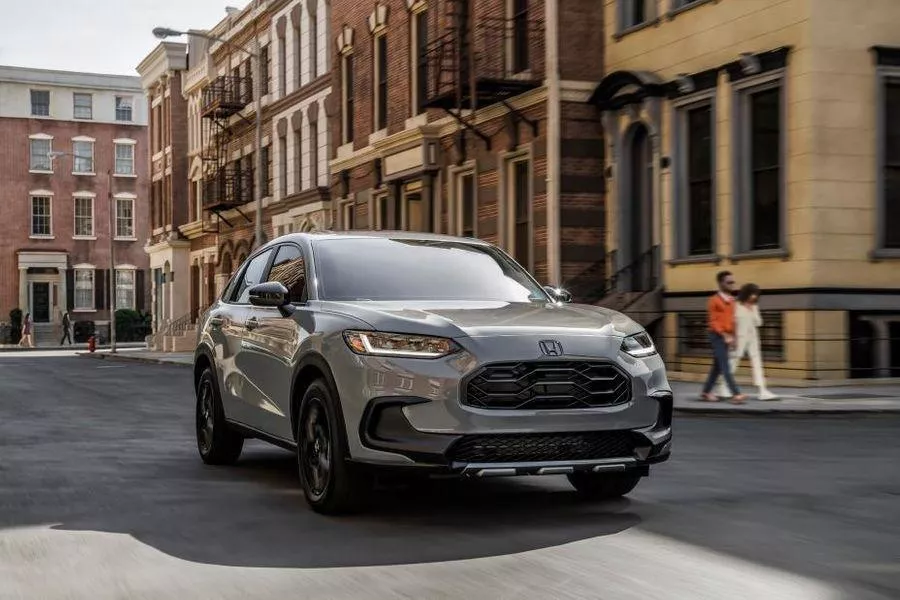
The US-spec Honda HR-V
The American HR-V also gets a trapezoidal grille which looks like the inverted version of the one we have on our HR-V. The American model also has a larger, less-refined grille pattern compared to the Philippine crossover, and it gets a less subtle-looking lower bumper as well.
From the sides though, both HR-Vs pretty much get the same modern crossover shape complete with black plastic trims on the wheel arches. Then again, the Philippine-spec model uses a set of 17-inch wheels that look totally different compared to the 17-inch or 18-inch wheel set on the American HR-V.
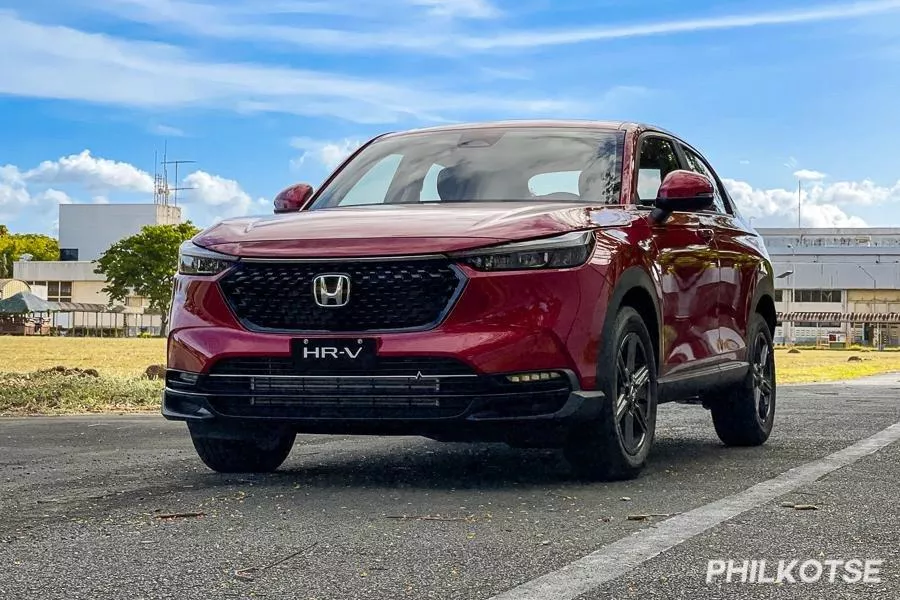
The Honda HR-V V variant for the Philippine market
Moving to the rear, the American HR-V lacks the LED bar that connects both taillights on the Philippine model. The American version also appears to come with silver trim pieces on its rear air dam, a feature which is not present on the PH-spec HR-V V variant.
In turn, the American HR-V also lacks the twin tailpipes which are present on the HR-V's top-spec V variant available locally. Its rear door handles also assume a more traditional position, in contrast to those on the Philippine HR-V's which are positioned on its C-pillars.
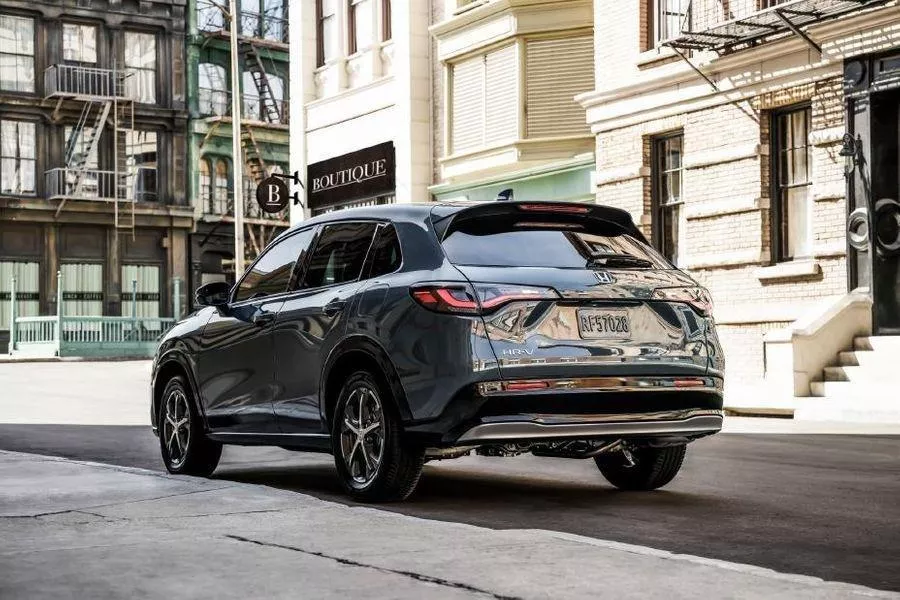
The US-spec HR-V from the rear
Lastly, the HR-V for the American market is a fair bit larger than the local version. That’s because it comes with a length of 4,568mm, a width of 1,840mm, and a height of 1,621mm. Compare that to the Philippine-spec HR-V V which is 4,385mm long, 1,790mm wide, and 1,590mm in height. The HR-V for the US also has a longer wheelbase spanning 2,655mm, while the local version’s wheelbase is 2,610mm long.
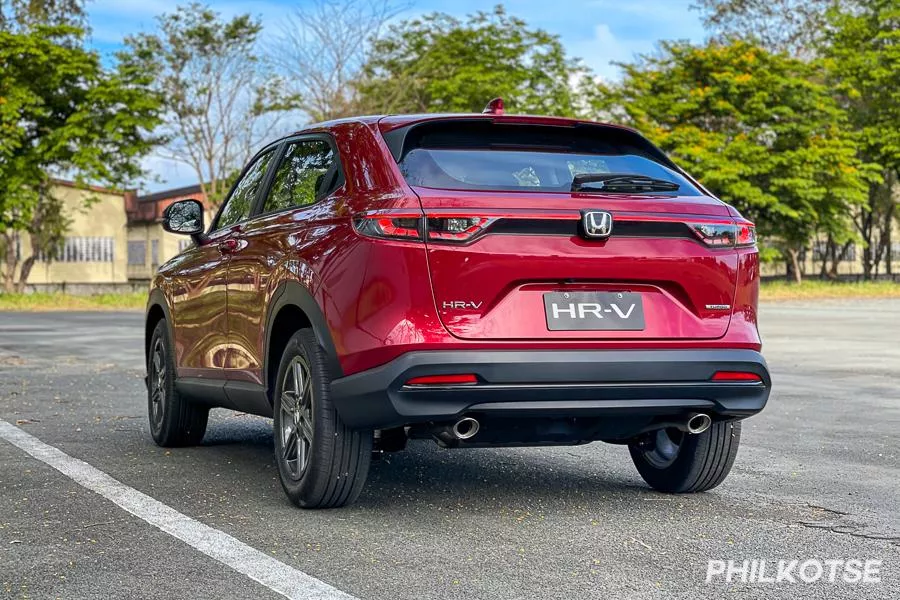
The Philippine market HR-V's rear end
US-spec vs PH-spec Honda HR-V: Interior
Just like the Philippine-spec Honda HR-V, the one that’s available in the U.S. can also seat up to five. Its dashboard looks different, appearing to be closer to the dashboard of the current Honda Civic.
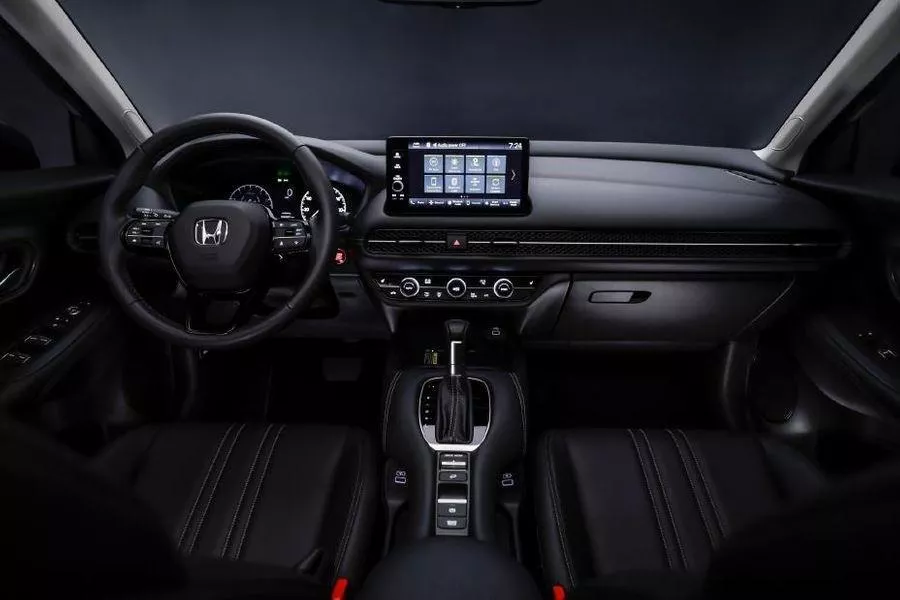
The American HR-V's front cabin
Besides cosmetic differences, the arrangement of the automatic air-conditioning controls, its air vents, the steering wheel, and the head unit appear to be identical. Well, save for the electronic parking brake button and hill-hold control, which on the U.S. model is centered with the gearshift lever. On the Philippine model, these buttons are positioned closer to the driver.
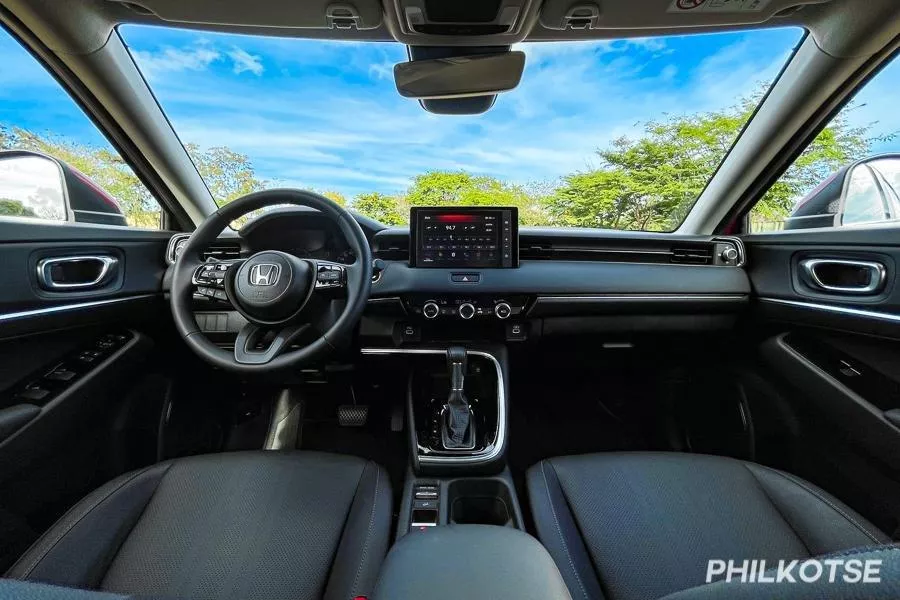
Inside the Philippine-spec HR-V V
Both versions also have 60:40 split folding rear seats, and both also get a decent amount of premium interior trim pieces.
US-spec vs PH-spec Honda HR-V: Tech and Safety
Moving on to tech, the US version of the HR-V gets a physical gauge cluster while the Philippine top-spec V variant gets a fully digital display.
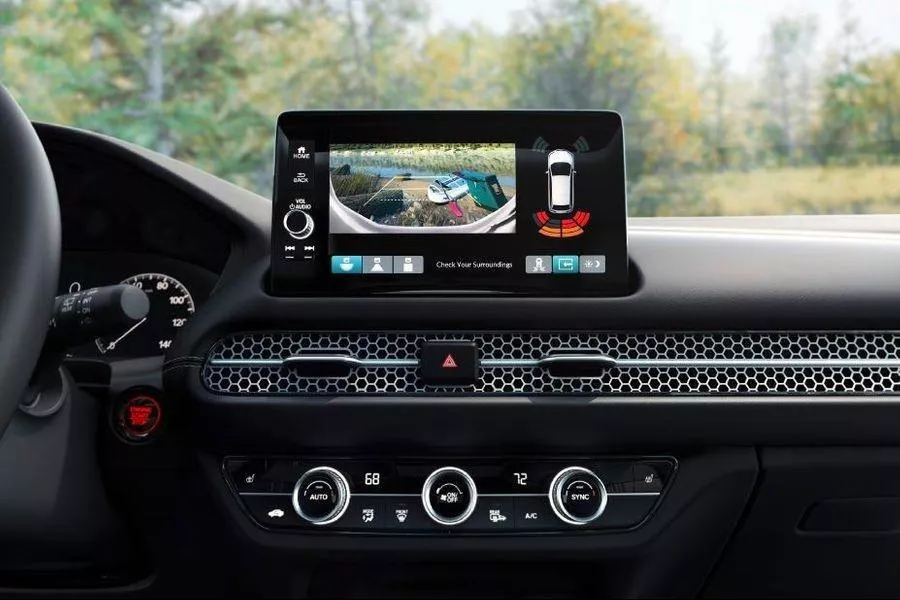
The U.S. market HR-V's touchscreen
Moreover, the Philippine version gets a smaller eight-inch touchscreen, while the US version (top-spec EX-L) gets a larger nine-inch touchscreen. Both do come with Apple CarPlay and Android Auto, Bluetooth, and USB connectivity.
When it comes to safety, both the HR-V versions come standard with the Honda Sensing driver-assist safety package. This means both have adaptive cruise control, low-speed follow, collision mitigation braking, lane-keep assist, road departure mitigation, blind-spot detection, etc. The U.S. version, however, comes with the addition of traffic sign recognition and a traffic jam assist feature.

A closer look at the Philippine-spec HR-V's touchscreen
US-spec vs PH-spec Honda HR-V: Engine and Performance
For what’s under the hood, the U.S. version of the Honda HR-V uses a 2.0-liter inline-4 gasoline engine that’s capable of making up to 158 horsepower and 187 Nm of torque.
In comparison, the Philippine-spec HR-V V variant uses a 1.5 turbocharged inline-4 gasoline mill that produces 174 horsepower and 240 Nm of torque.

The HR-V V's 1.5-liter inline-4 turbocharged gasoline engine
That said, the Philippine-spec model definitely uses a much beefier engine than its Stateside version. However, both use a continuously variable transmission, though the one on the U.S. model comes with the Honda Step-shift programming, which simulates gear changes at full throttle.
Furthermore, the Philippine-spec HR-V is a front-wheel-drive model, whereas the US-spec HR-V comes with real-time all-wheel-drive.
As hinted at by their differing interiors, these two models actually use different platforms. For the US model, it is underpinned by the same Honda Architecture that the new Civic uses.

The American HR-V gets all-wheel-drive
The Philippine model, meanwhile, shares the same platform with the seventh-gen Honda City. That said, it is quite apparent that the US model is far heavier, but also potentially roomier than the Philippine-spec model.
US-spec vs PH-spec Honda HR-V: Conclusion
All in all, the main differences between the local HR-V and the U.S.-spec HR-V all have to do with their exterior designs, chassis, and powertrains. So, one can pretty much call them “cousins” as they do not share that much mechanical DNA from each other.
They do have comparable levels of gadgetry and interior comfort. Well, save for some particular features like the U.S. HR-V's traffic sign recognition system.
So, which do you think looks better? Do you lean more towards the look of the American HR-V? Or do you prefer what we have locally?
For more car news and car industry updates, keep it here on Philkotse.
Know more about Honda HR-V 2025

The 2025 Honda HR-V is a subcompact crossover. In the Philippine market, it has two variants. The top-spec RS Turbo CVT is priced at Php 1,799,000. The mid-spec trim meanwhile, is the HR-V V Turbo CVT and it is priced at Php 1,519,000. The entry-level HR-V S CVT meanwhile is priced at Php 1,450,000.
For engines, the HR-V V Turbo and the RS Turbo use a 1.5-liter engine capable of making 174 horsepower and 240 Nm of torque. The HR-V S also uses a 1.5-liter mill, but it is naturally aspirated. In turn, its output is rated at 119 horsepower and 145 Nm of torque. All three trims use a continuously variable transmission sending power to its front wheels.
Size-wise, the HR-V V and RS are 4,385mm long, while the HR-V S is 4,330mm long. All three come with a width of 1,790mm, and a height of 1,590mm. Both also have a wheelbase length of 2,610mm. The top-spec V gets a ground clearance of 181mm, whereas the HR-V S has more at 196mm.
Locally, the HR-V competes against the likes of the Mazda CX-3, Hyundai Kona, Subaru XV, Toyota Corolla Cross, Ford Territory, among others.
>>> New and used Honda Hr-V 2025 for sale in the Philippines
Honda HR-V Launch
Back in June 2015, the Honda HR-V was launched in the Philippines. To complement Honda's compact crossover - the CR-V, they introduced the Honda HR-V, their company's subcompact crossover to the country's market. On August 23, 2018, the facelifted crossover was launched that includes an updated lighting system up front and rear part, a new RS trim level that brings a blacked-out grille together with new 2-tone wheels.
In 2022, Honda Cars Philippines Inc. brought in the third generation model for the local market. It is offered in two different variants. There's the top-spec HR-V V Turbo, and the entry-level HR-V S. Later at the 2022 PIMS in September, the RS Turbo was unveiled.
Honda HR-V Exterior
On the outside, the top-spec HR-V RS, HR-V V, and the entry-level HR-V S are all equipped with LED headlamps, LED taillights, and LED fog lamps. The HR-V V and RS variant then gets auto-folding side mirrors, a sportier bumper set, and a sportier-looking spoiler. The RS is the only variant that comes with sequential turn signal indicators.
Both the V and the S ride on a set of 17-inch wheels, while the RS gets a larger 18-inch set.
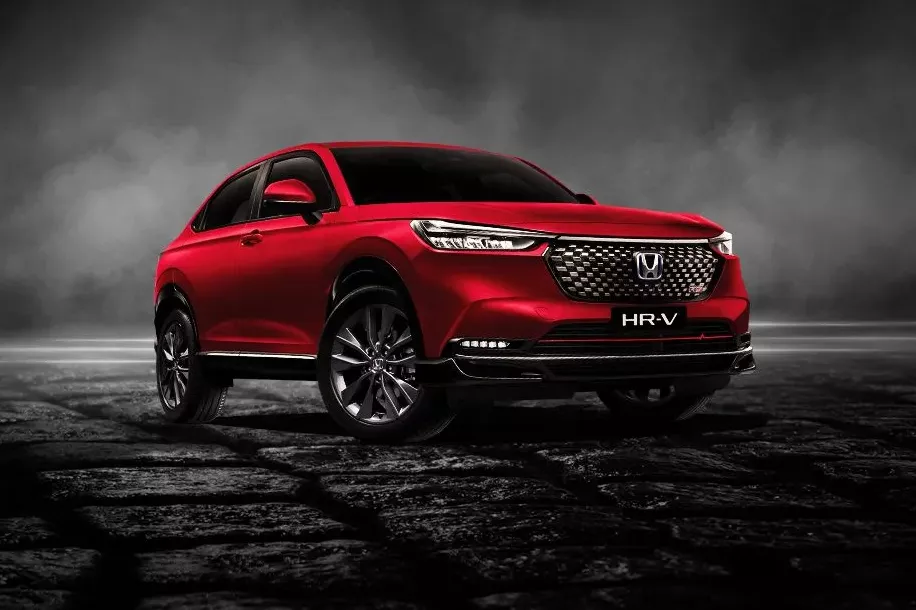

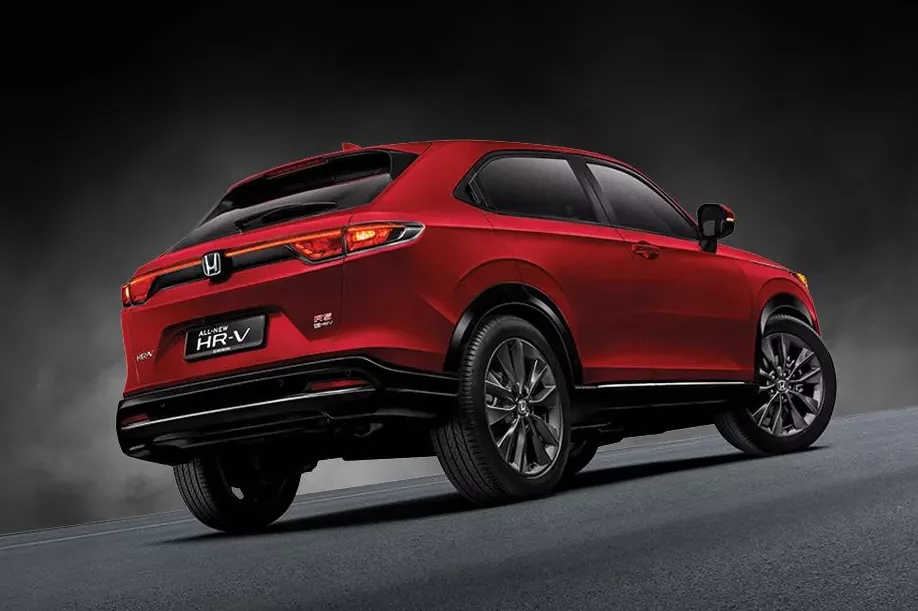
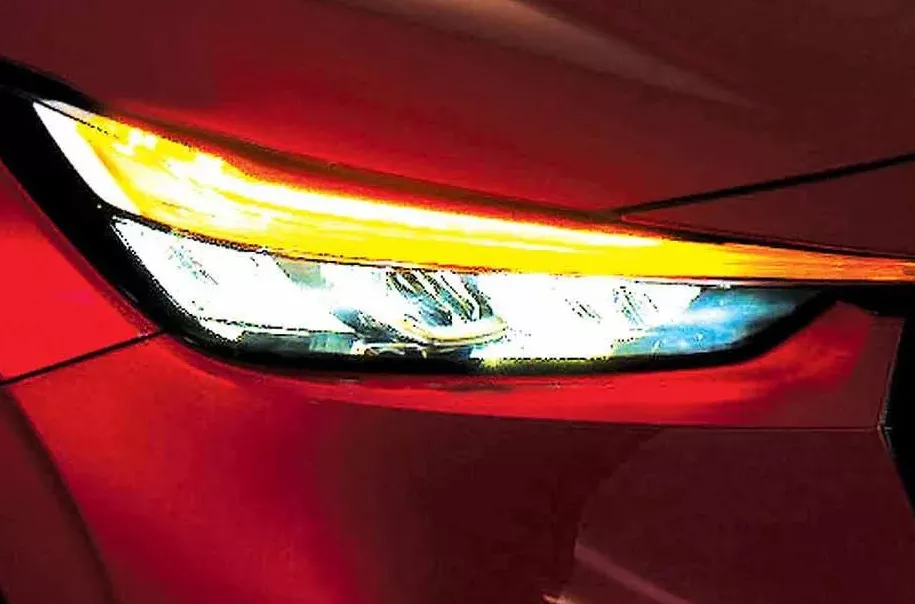
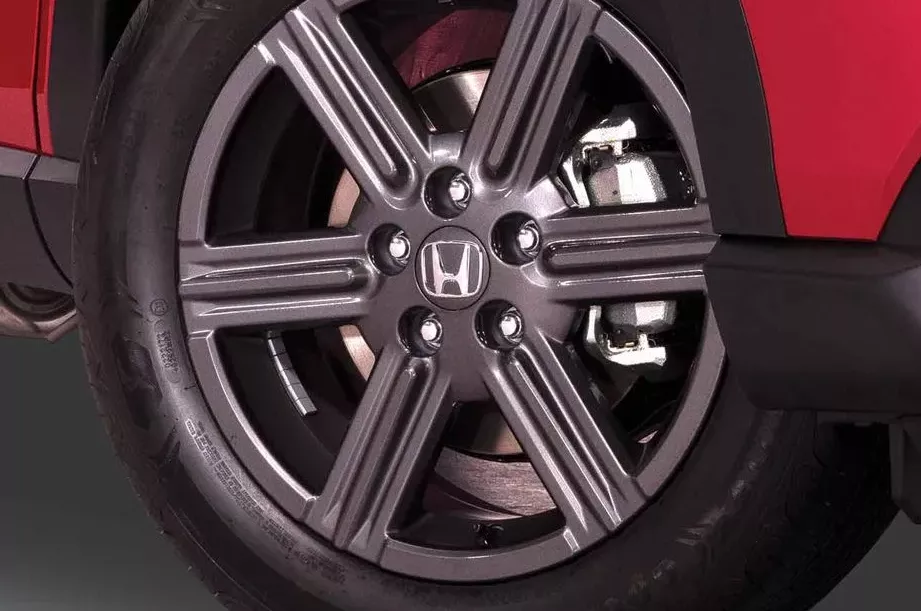
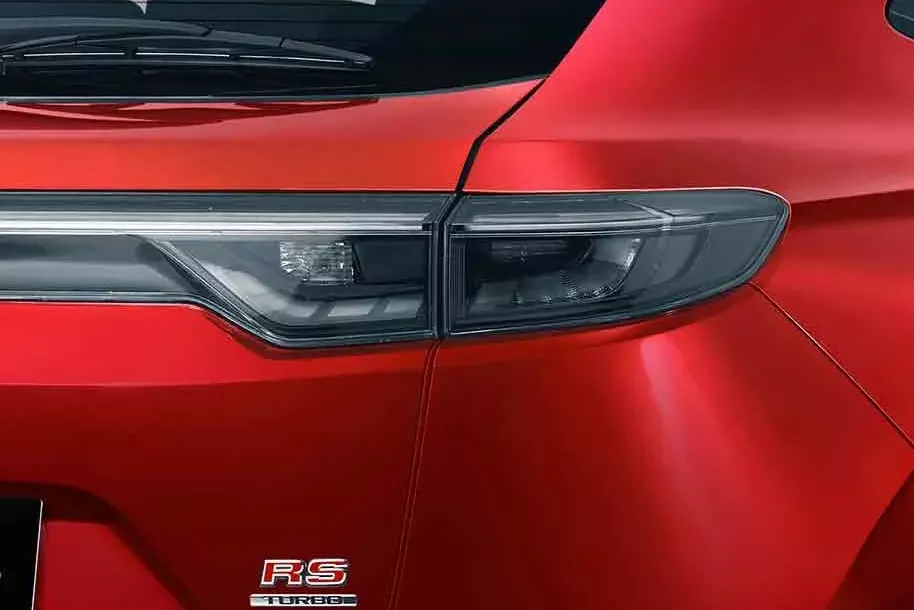
Honda HR-V Interior
The 2024 HR-V can seat up to five. Its occupants are then kept comfortable with an automatic air-conditioning system with rear vents. The top-spec trim in particular ups the premium feel of the model with an auto-dimming rearview mirror, leather upholstery, as well as a leather-wrapped steering wheel and shift knob.
Rearwards, both trims get a 60:40 split-type ULT seat. It shares this feature with the City Hatchback, so it also gets long-mode and tall-mode seat configurations.
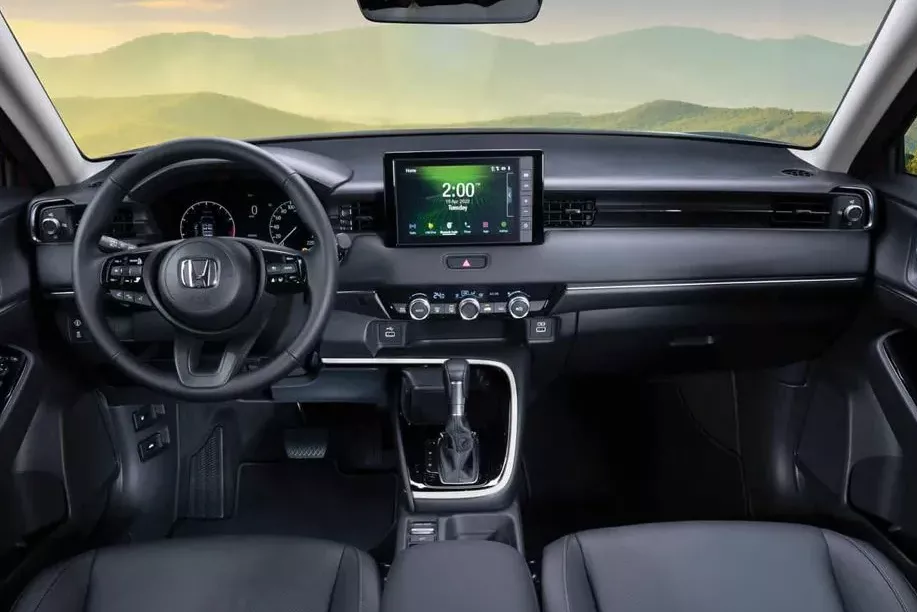
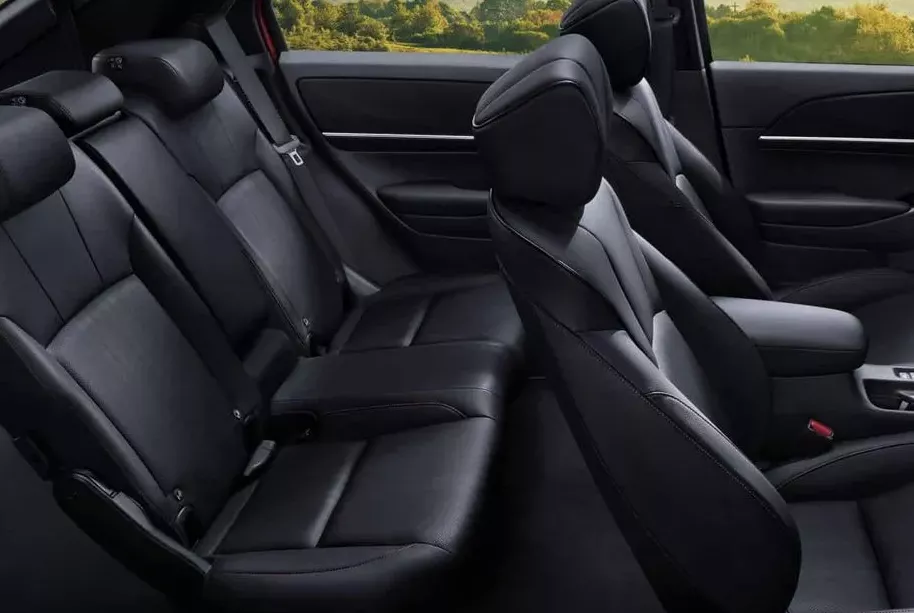
Technology & Safety Features
All HR-V trims for the Philippines come standard with the Honda Sensing Safety suite. This means that all are kitted out with adaptive cruise control, low speed follow, collision mitigation braking, lane keep assist, road departure assist, auto high beams, and lead car departure notification.
The HR-V RS, HR-V V, and HR-V S also get anti-lock braking with electronic brake force distribution, hill-descent, and hill-start assist, ISOFIX child seat anchors, stability control, speed sensing door locks, a reverse camera, among other features.
Entertainment is then handled by an eight-inch touchscreen, which for both trims gets a six-piece speaker system, Apple CarPlay, Android Auto, Bluetooth, USB connectivity, and audio streaming. The top-spec HR-V RS and the V do get a wireless smartphone charger which isn’t present on the HR-V S.
Platform & Chassis
The all-new 2024 Honda HR-V uses the Honda Global Small Car platform. Like its predecessor though, the Philippine-spec version retains a front-engine/front-wheel-drive layout.
For suspensions, it uses a MacPherson strut for the front and an axle-type suspension for the rear. Braking for this model is then handled by disc brakes for all four wheels, and it also uses an electronic parking brake with an auto-hold function.
Engine & Drivetrain
Powering the top-spec HR-V RS and the mid-spec V is a turbocharged 1.5-liter inline-4 gasoline engine that can output 174 horsepower and 240 Nm of torque. Meanwhile, the entry-level HR-V S uses a naturally aspirated inline-4 that is good for 119 horsepower and 145 Nm of torque.
Regardless of configuration, the HR-V comes standard with a continuously variable transmission with a paddle shifter manual mode.
Only the top-spec RS and the V get a sports driving mode, though all HR-V trims have access to a normal mode and economy mode.
For the Philippines, the all-new Honda HR-V can come in six different colors. These are Red Metallic, Crystal Black Pearl, Ignite Red, Premium Opal White Silver Pearl, Platinum White Pearl, and Meteoroid Grey.
In terms of on-board features and safety features, the new 2025 HR-V is now on-par with most of its competitors. The turbocharged variant in particular also ranks as among the most powerful models within its segment and price range.
Honda HR-V 2025 Price List
| Variants | Price |
|---|---|
| Honda HR-V 1.5 S CVT Honda SENSING | ₱1,450,000 |
| Honda HR-V 1.5 S CVT Honda SENSING Platinum White Pearl | ₱1,470,000 |
| Honda HR-V 1.5 V Turbo CVT Honda SENSING | ₱1,519,000 |
| Honda HR-V 1.5 V Turbo CVT Honda SENSING Premium Opal White Silver Pearl | ₱1,539,000 |
| Honda HR-V 1.5 RS Turbo CVT Honda SENSING | ₱1,799,000 |
| Honda HR-V 1.5 RS Turbo CVT Honda SENSING Premium Opal White Silver Pearl | ₱1,819,000 |
Honda HR-V Pros & Cons
Pros
-
Lively engine
-
Plenty of features
-
Practical
Cons
- Rear seat headroom is not the best
Honda HR-V FAQs
1. Which one is cheaper: the Honda HR-V or the Honda CR-V?
Honda HR-V is. The highest price of HR-V is Php1,759,000 meanwhile CR-V price is Php 2,100,000 - 2,610,000.
2. Is the Honda HR-V a reliable car?
Yes, it is. The Reliability Rating of this car is 5/5 and the HR-V also ranks 1st out of 7 for subcompact SUVs.
3. What does the HR-V stand for on Honda?
HR-V means High-Rider Revolutionary Vehicle.
₱ 1,389,000 - ₱ 1,739,000
ExploreRecent posts
- 2023 honda hr-v us debut Jun 07, 2022
- honda hr-v rs variant turbo possible Apr 20, 2022
- Honda HR-V 2022 sales target Apr 20, 2022
- 2022 honda hr-v debuts in Philippines Apr 19, 2022
















